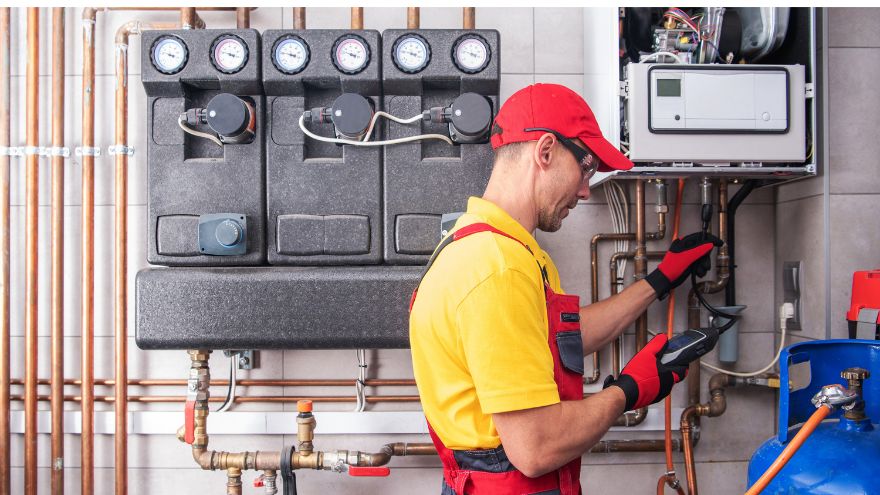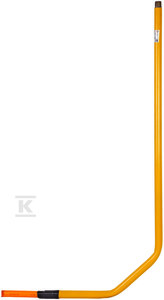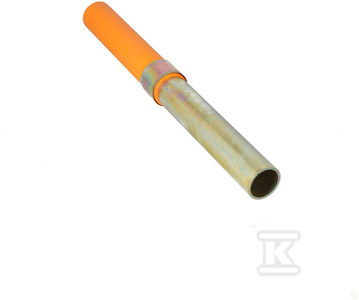Nowadays, access to gas seems to be essential, especially since it is considered a clean medium. Both owners of new buildings and older buildings decide to install a gas installation. Of course, you must ensure proper preparation of the entire installation. Pipes play an important role. How to choose the right pipes for a gas installation?

Check out heat shrink sleeves at the Onninen wholesaler
Types of gas pipes
![]() Many people wonder which gas pipes to choose. When choosing pipes, you should not only focus on economics, but primarily on work efficiency. For example, you can choose black steel pipes with or without seams. They are connected by welding. It is worth noting that welding starts from the main tap. You can also choose copper pipes that are connected by soldering. The former are used both indoors and outdoors, while copper ones can only be installed indoors.
Many people wonder which gas pipes to choose. When choosing pipes, you should not only focus on economics, but primarily on work efficiency. For example, you can choose black steel pipes with or without seams. They are connected by welding. It is worth noting that welding starts from the main tap. You can also choose copper pipes that are connected by soldering. The former are used both indoors and outdoors, while copper ones can only be installed indoors.
Steel pipes are used to obtain a truly durable and safe connection. To prevent corrosion, protect them with paint. Teflon tape or sealing tape can be used for sealing. Copper pipes are resistant to rust, but you should be aware that they expand under the influence of temperature, which means that they are only suitable for indoor installation. Copper wires should be connected using brass fittings. You can also use connectors.
Gas installation pipes should be laid on top of the walls. When it comes to assembly, we recommend clamps. Living rooms are places where threaded connections cannot be used under any circumstances. All cables must be routed so that no joints are necessary. Soldering works much better. Only hard pipes should be used in gas installations. We also distinguish PE pipes, i.e. polyethylene. They can be chosen because they are durable, resistant to stress corrosion cracking, and are resistant to abrasion. There are also brass pipes, which are very massive and heavy. They are most often used in industrial gas installations.
How much does 1 meter of gas pipe cost?
Gas pipes are not very expensive, but the price is influenced by the type of materials used. You need to know that black seamless steel pipes cost on average about PLN 22. This applies to the standard size of 33.7/2.9. Larger black seamless steel pipes, e.g. dimensions 48.3/3.2, cost PLN 33. A polyethylene pipe with similar dimensions is more expensive, especially if you choose, for example, a columnar one with a cover. In this case, the cost may increase threefold. You can also choose copper pipes. Their price is relatively low. For example, you have to pay approximately PLN 30 per linear meter. This applies to pipes with a thickness of 1 mm.
What diameter should the gas pipe be?
The diameter of the pipes should be approximately 80 mm. This applies to models mounted on gas stoves. Pipes used outdoors should have a diameter of 125 mm. Such solutions are particularly effective in condensing furnaces, while in gas installations where copper pipes are used, the diameter should be 22 mm. This applies to hard steel pipes whose walls are no thicker than 1 mm.
What pipes should be used to connect the gas furnace to the central heating?
 When connecting a gas furnace to central heating, use appropriate pipes for the gas installation . Such an installation must function properly and discharge exhaust gases, so it must be 100% tight. In gas installations, hard copper pipes can be used, which are connected by soldering or pressing using fittings. Steel pipes are also joined by welding. Optionally, you can choose threaded fittings made of white cast iron. The arrangement of the cables depends on the type of gas with which the entire installation is supplied. Wires should be above electrical lines if natural gas flows through them. Additionally, vertical sections must be located at the appropriate distance from electrical devices and this distance is 60 cm. Tees that have three outlets are important. In gas installations, you should choose very massive ones, e.g. brass or copper. Cast iron is much less frequently used.
When connecting a gas furnace to central heating, use appropriate pipes for the gas installation . Such an installation must function properly and discharge exhaust gases, so it must be 100% tight. In gas installations, hard copper pipes can be used, which are connected by soldering or pressing using fittings. Steel pipes are also joined by welding. Optionally, you can choose threaded fittings made of white cast iron. The arrangement of the cables depends on the type of gas with which the entire installation is supplied. Wires should be above electrical lines if natural gas flows through them. Additionally, vertical sections must be located at the appropriate distance from electrical devices and this distance is 60 cm. Tees that have three outlets are important. In gas installations, you should choose very massive ones, e.g. brass or copper. Cast iron is much less frequently used.
Pipes for gas installations in the Onninen wholesaler
If you are looking for connection pipes for a gas installation, the Onninen installation wholesaler offers offers from renowned manufacturers.
A good choice may be the Weba polyethylene gas connection PE32 x GZ 5/4", l = 1500. It is very durable, resistant to mechanical damage, but also to overload. For greater durability, the manufacturer used an aluminum pipe cover. It enables safe gas connection, e.g. reducer or furnace. This connection can be used outdoors without any worries. Always ensure adequate ventilation at the installation site. We also remind you that pipelines for liquid gas should be run between partitions and must have a safety valve.
 Also noteworthy is the steel connection Weba 32, thread 1", 1500x1500 PE100RC . It is intended for supplying a gas connection. It can be used for various cables or receivers. It is made of an insulated steel pipe, which is bent at a right angle. It is finished with a steel flange. The manufacturer also used insulation of the element made of polyethylene with a thickness of at least 2 mm.
Also noteworthy is the steel connection Weba 32, thread 1", 1500x1500 PE100RC . It is intended for supplying a gas connection. It can be used for various cables or receivers. It is made of an insulated steel pipe, which is bent at a right angle. It is finished with a steel flange. The manufacturer also used insulation of the element made of polyethylene with a thickness of at least 2 mm.
A Weba PE/steel 63/50 PE100 SDR11 pipe connection may also be necessary. It is made using the clamping method. It allows you to connect polyethylene receivers with steel ones. This connection is used in both individual installations and industrial networks. The connection ends with a polyethylene pipe on one side and a steel pipe on the other, which then needs to be welded.
The finished gas installation must be accepted in the presence of a representative of the gas supplier. It is checked whether the gas installation complies with the design and entries in the construction log, and the chimney sweep report confirming the proper functioning of the ventilation ducts is verified. The distance of gas ducts from other installation ducts and ventilation grilles, durability of mountings, spacing of supports, correctness of penetrations through partitions, as well as paint and anti-corrosion coatings are checked. You need to check the gas installation and perform a leak test using compressed air.